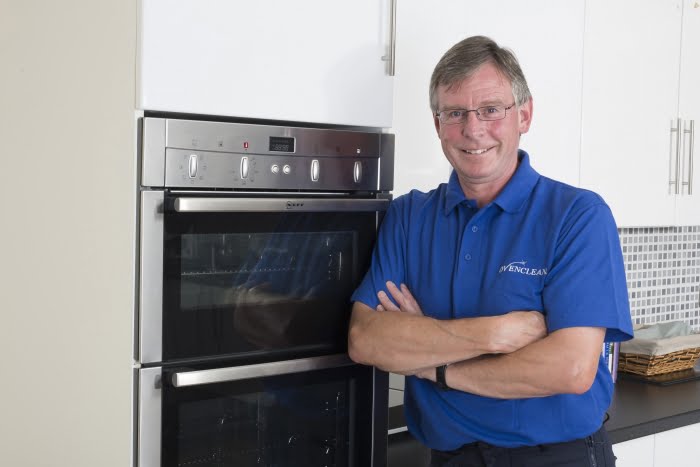
Are Pyrolytic Ovens Safe to Use and Are There Any Risks Associated with Them?
Pyrolytic ovens have become increasingly popular in modern kitchens due to their self-cleaning capabilities. However, many consumers have questions about their safety and potential risks. This blog will explore the safety aspects of Pyrolytic ovens, their benefits, and any associated risks to help you make an informed decision about using this technology in your home.
What is a Pyrolytic Oven?
A pyrolytic oven is a modern appliance designed to make cleaning easier. Unlike traditional ovens, which require manual scrubbing and chemical cleaners, pyrolytic ovens clean themselves using high heat. During the cleaning cycle, the oven heats up to temperatures around 500°C (932°F), turning food residues into ash that you can simply wipe away.
How Does a Pyrolytic Oven Work?
When you activate the pyrolytic cleaning function, the oven’s interior reaches extremely high temperatures. This intense heat causes any food scraps, grease, and spills to burn off and turn into ash. The process is similar to how a wood fire burns away old logs to leave just ash behind. After the cycle completes, all you need to do is wipe the ash away with a damp cloth.
Benefits of Using a Pyrolytic Oven
Pyrolytic ovens offer several advantages:
- Effortless Cleaning: No more scrubbing and chemical cleaners. Just activate the self-cleaning function and let the oven do the work.
- Time-Saving: The cleaning cycle is usually completed within a few hours, freeing you from manual cleaning.
- Better Hygiene: High temperatures kill bacteria and other harmful microorganisms that might linger in a dirty oven.
Are Pyrolytic Ovens Safe to Use?
Yes, pyrolytic ovens are generally safe to use. They are designed with safety features to handle the high temperatures involved in the cleaning cycle. However, there are a few important considerations:
- High Heat: The cleaning cycle generates a lot of heat, so it’s essential to ensure that the oven is properly ventilated. Avoid placing any flammable materials near the oven during the cycle.
- Child Safety: Keep children and pets away from the oven during the cleaning cycle to avoid accidental burns.
- Odors: The process can produce smoke or unpleasant odors, so it’s a good idea to ensure your kitchen is well-ventilated.
Potential Risks of Pyrolytic Ovens
While pyrolytic ovens are generally safe, there are some potential risks:
- Overheating: If the oven’s ventilation is inadequate, there’s a risk of overheating which could potentially damage kitchen cabinets or the oven itself.
- Burn Risks: The exterior of the oven can become very hot during the cleaning cycle, so be cautious when opening the door immediately afterward.
- Odor Sensitivity: Some people may find the odors produced during the cycle unpleasant, especially those with respiratory issues.
What to Do Before Using a Pyrolytic Oven
Before starting the pyrolytic cleaning cycle:
- Remove Racks and Accessories: Take out oven racks and any other removable parts, as these can be damaged by the high heat.
- Clean Loose Debris: Wipe away any large food particles or spills to prevent excessive smoke or odor during the cleaning cycle.
- Ventilate: Ensure your kitchen is well-ventilated by opening windows or using an exhaust fan.
How to Minimize Risks
To reduce potential risks:
- Regular Maintenance: Regularly check and maintain the oven to ensure it’s functioning correctly.
- Proper Use: Always follow the manufacturer’s instructions for using the pyrolytic cleaning function.
- Ventilation: Keep the kitchen well-ventilated during the cleaning cycle.
Maintenance Tips for Pyrolytic Ovens
To keep your pyrolytic oven in good condition:
- Clean the Oven Door: After each cleaning cycle, wipe the oven door to remove any residue.
- Inspect the Oven Regularly: Check for any signs of wear or damage.
- Avoid Abrasive Cleaners: Use only gentle cleaners and soft cloths to avoid damaging the oven’s surface.
Common Misconceptions
- All Self-Cleaning Ovens Are the Same: Not all self-cleaning ovens use pyrolysis; some use steam or other methods.
- Pyrolytic Cleaning Is Eco-Friendly: While it reduces the need for chemical cleaners, the process does consume a lot of energy.
Alternatives to Pyrolytic Ovens
If a pyrolytic oven doesn’t seem right for you, consider:
- Steam Cleaners: These use steam to loosen grime and are generally less energy-intensive.
- Manual Cleaning: Regular scrubbing and using oven liners can help maintain cleanliness without relying on high temperatures.
Cost vs. Benefits
Pyrolytic ovens can be more expensive upfront compared to standard ovens, but their convenience and reduced need for chemical cleaners can be worth the investment in the long run.
Is a Pyrolytic Oven Right for You?
Deciding whether a pyrolytic oven is right for you depends on your cooking habits and maintenance preferences. If you value convenience and don’t mind the higher upfront cost, a pyrolytic oven could be a great addition to your kitchen.
FAQs
What makes pyrolytic ovens different from other self-cleaning ovens?
Pyrolytic ovens use extreme heat to burn off residues, while other types may use steam or chemicals.
How often should I use the pyrolytic cleaning function?
It’s recommended to use the cleaning function when the oven is noticeably dirty, typically every few months or as needed.
Can I use the oven while it’s in the pyrolytic cleaning cycle?
No, the oven should be completely unused during the cleaning cycle for safety reasons.
Are there any specific brands known for making reliable pyrolytic ovens?
Brands like Bosch, Samsung, and Whirlpool are known for their reliable pyrolytic ovens.
How much does a pyrolytic oven cost compared to a regular oven?
Pyrolytic ovens generally cost more due to their advanced features, but prices vary by brand and model.
Conclusion
In conclusion, pyrolytic ovens represent a modern solution to traditional oven cleaning woes. While they are generally safe and efficient, users should be mindful of the high temperatures involved and follow safety guidelines. The benefits of time saved and reduced cleaning efforts often outweigh the minor risks associated with proper usage.
